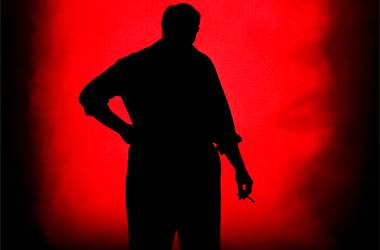red @ goodman theater, 29 september 2011.
John Logan’s Red appears, at first, to be almost obsessively about painting—and more particularly about the abstract expressionism of Mark Rothko. The entire play takes place in Rothko’s studio and is a deeply philosophical dialogue between the painter and his new assistant. But as much as the play is about painting, it’s also about theater. This is fitting because according to biographer James E.B. Breslin before Rothko became a painter he wanted to be an actor.
In one of the play’s most startling moments, Rothko, played in the Goodman Theater production by Edward Gero, asks his assistant Ken, played by Patrick Andrews, to turn toward the audience. “What do you see?” he demands. For a disconcerting instance, the fourth wall is broken. But just as quickly, it reappears. The fourth wall turns out to be the studio wall. Rothko, we quickly realize, is asking Ken to look at more of his paintings on an imaginary wall in front of them. Yet during the rest of the play, the moment of confusion never quite vanishes. Rothko keeps urging Ken to understand his paintings as living beings, as vulnerable, fragile, spiritual subjects who long for company, attention, protection, and connection. They are people, taking us in as much as we take them in. An audience to viewers.

“What do you see?”—a simple question without a simple answer. The characters in the play look to an invisible studio wall. We, the audience, see right through it. It does not exist. We see them looking at paintings. They see Rothko’s famous rectangles, glowing in a loft in mid-century Manhattan. But also: “what do you see?” The actors on stage see us, the audience, beyond the stage, right in the moment. They see through the imaginary paintings on the wall to the real canvas before them. We are the paintings. And we see the actors right back as they paint the scene. A communion takes place, displayed but displaced. It’s precisely the thing that Rothko longed for his art to accomplish: the unsettling emotional power of looking hard and seriously seeing.
At a later point in the play, Rothko and his assistant furiously prime a canvas together, their backs to us. They fall down in exhaustion, spent. We watch them watch their work, which, on stage, is painting us. With Red, you thought you were going to watch theater about painting. It turns out you’re witnessing painting about theater. In either case, it’s worth contemplating.
Links: